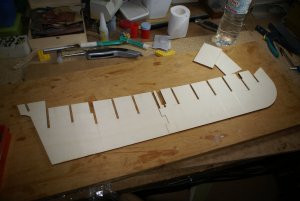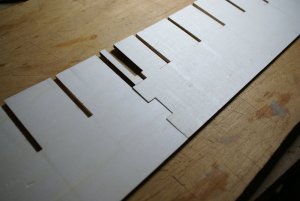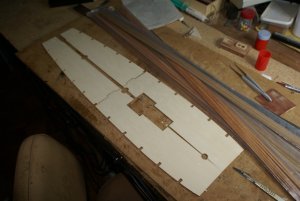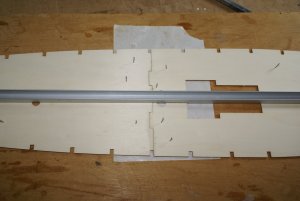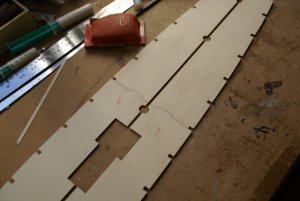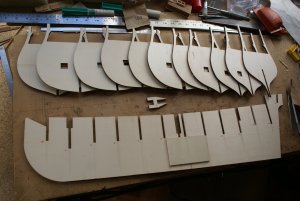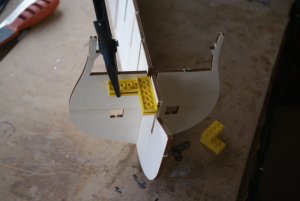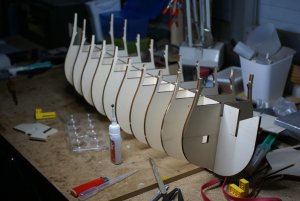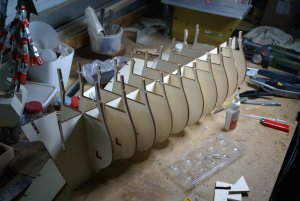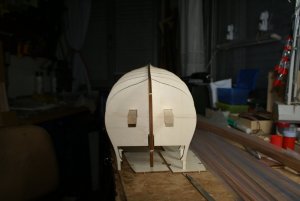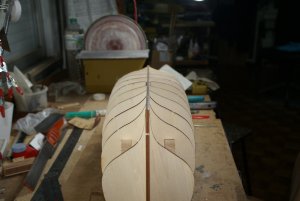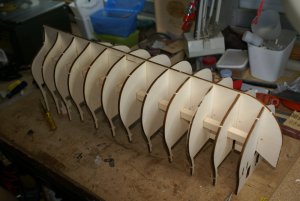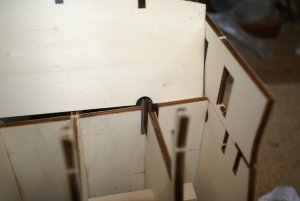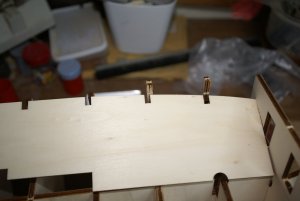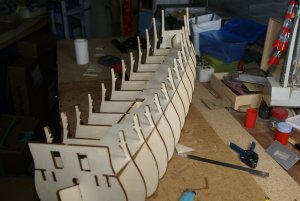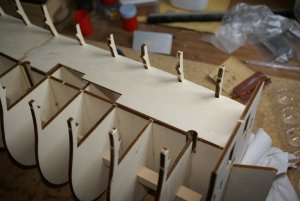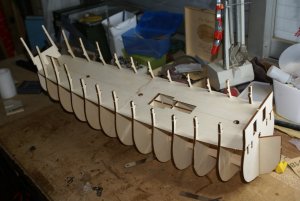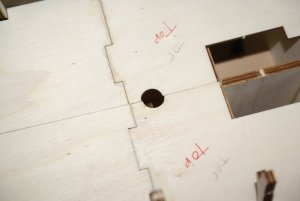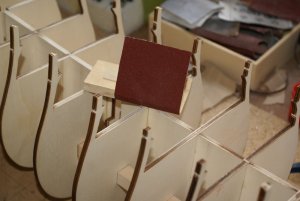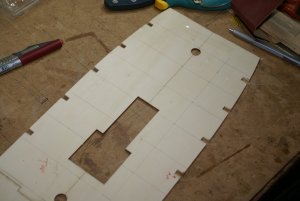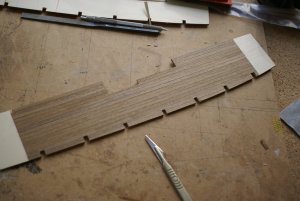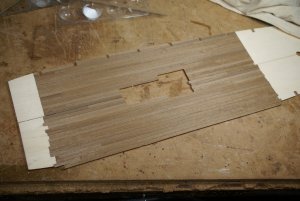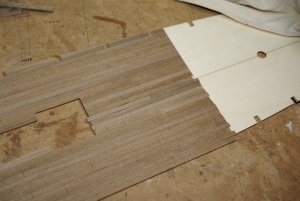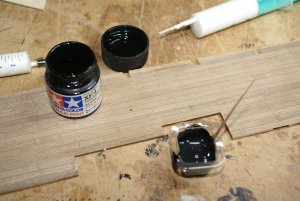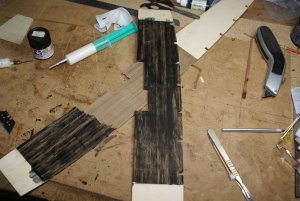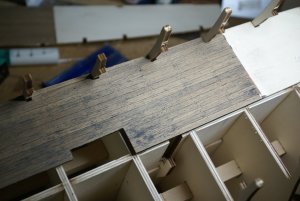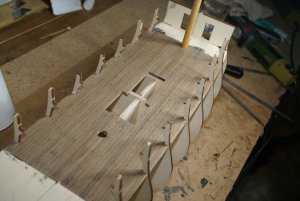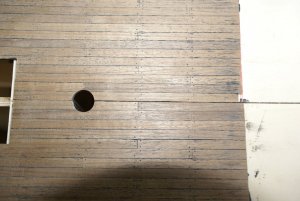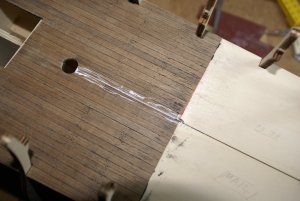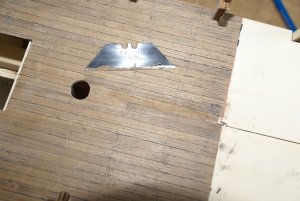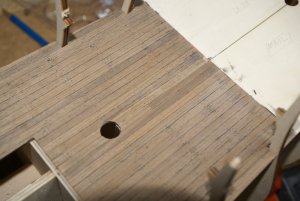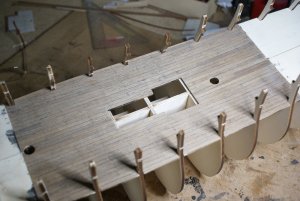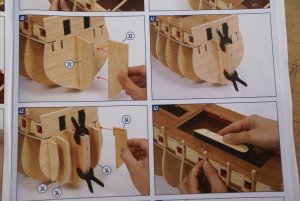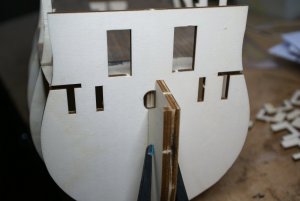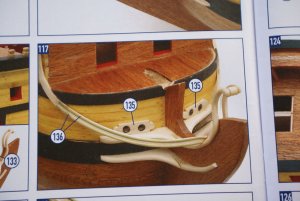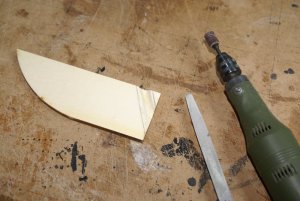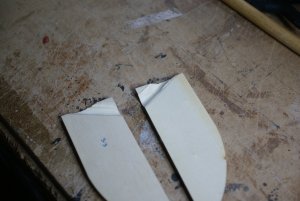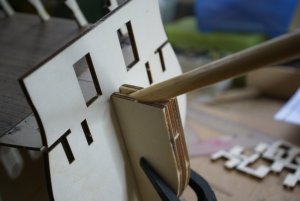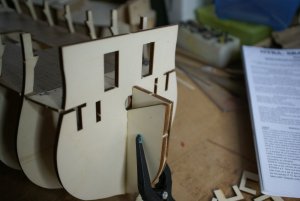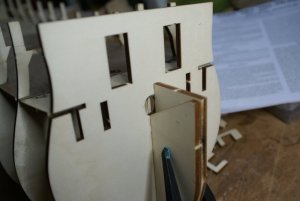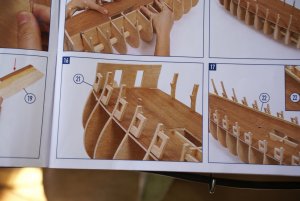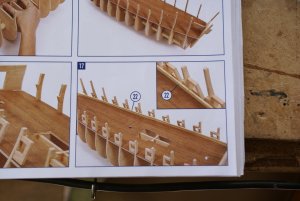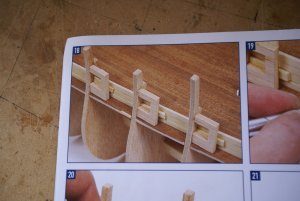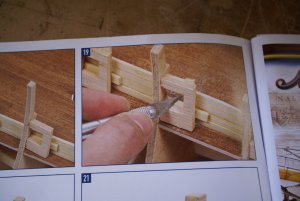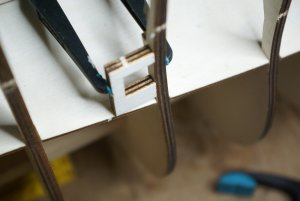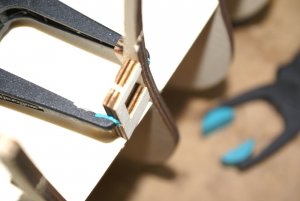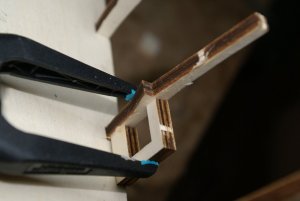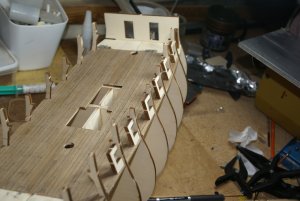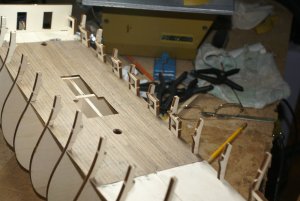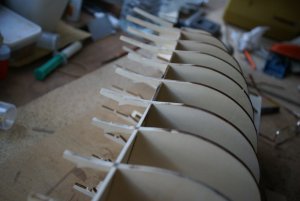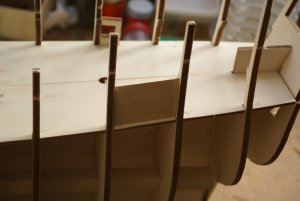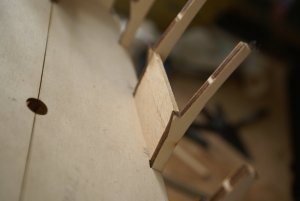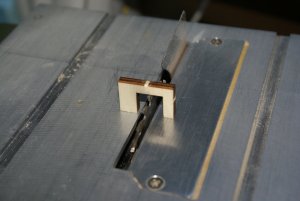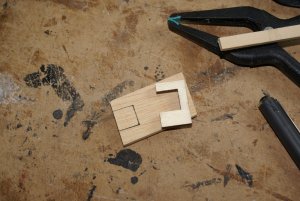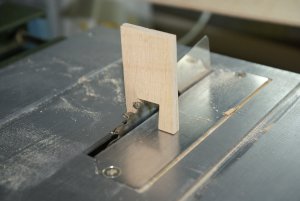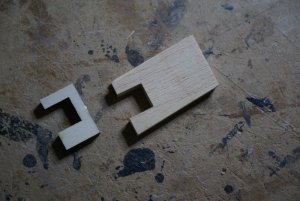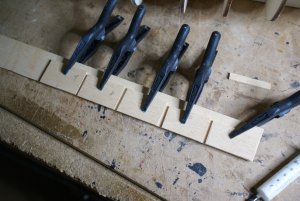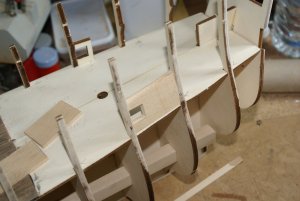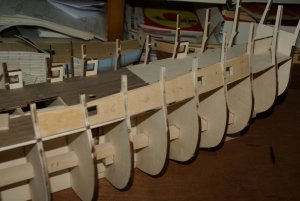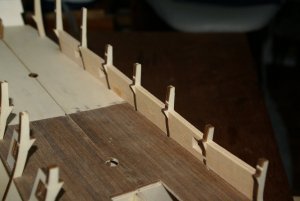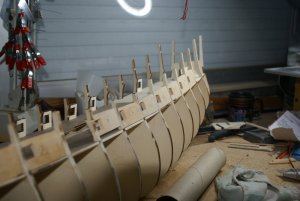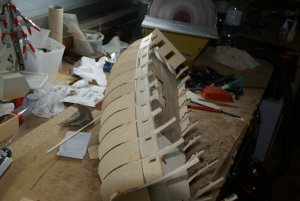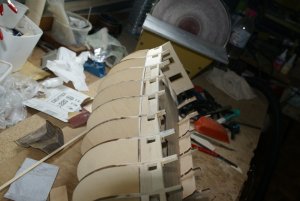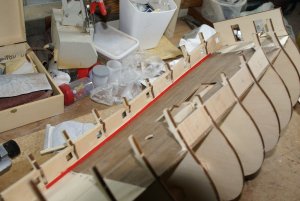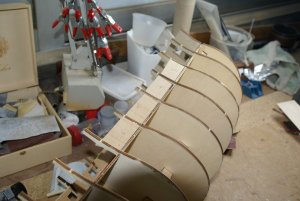Once I had a small model boat...
Then I got myself another small model boat and started scratch building yet another small model boat.
My first small model boat was a Viking ship (Amati) that I changed substantially in order to get a passable model of a Viking ship (maybe a build log someday... )
)
My second and third small boats you already know although Niña is a little put aside at the moment (but not forgotten).
And there happened my 75th birthday...
And then there were FIVE small model boats



 .
.
Well, one of then is not so small...
At this point I must confess that it was ME who offered myself one of those small boats. The other was a lawful offer...
Nuestra Senõra del Pilar is kitted by OcCre (spanish) and they sell their more expensive kits complete or in packs. N. S. del Pilar is composed of 6 packs and I offered myself the first two. It is enough to build most of the hull.
The interesting part is that buying the packs is more or less the same price than buying the whole kit and gives more flexibility (and takes a lot less space at the stash.
The first pack is not that exciting, it has a lot of ply for the bulkheads and false keel plus some other wood for planking.
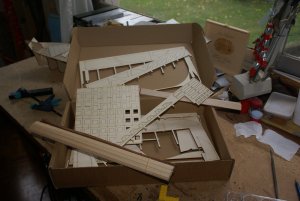
The instructions are in color, and there are some 1/3 plans. They cover all the packs and as almost all the instructions that I know are pretty useless. I mean, you have some pictures ot the build and a very vague step-by-step instructions .
In summary: you are on your own . But that happens with most of the kits I know, either ships or planes so nothing new here so nothing new.
But that happens with most of the kits I know, either ships or planes so nothing new here so nothing new.
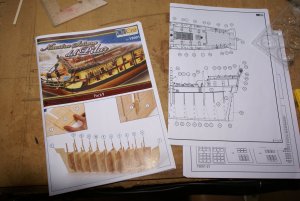
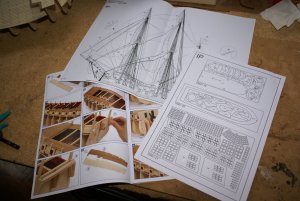
The other thing is that the ship is HUGE. The hull alone is 70cm long and it dwarfs my prince, let alone the Niña.
As a matter of fact I am not sure where I am going to put that monster once finished but I'll think of something. First it needs to be build.
The ply is good quality (5,5mm) but the "bridges" connecting the parts are difficult to break they had to be cut with a heavy carpet knife.
It may seem bold of me being as I am initiating in this hobby, but is not a beginners kit. I may not know a lot about ship kits, but I have my share of kits and instructions and for me a beginners kit is that kit that has very good and detailed instructions, the construction is straightforward, the parts fit together well and there are no traps.
This one has poor instructions, the construction has its problems, the fit is OK but traps it has.
Starting with the ply parts, they are not numbered although there are drawings showing where everything is.
Things like this may happen:
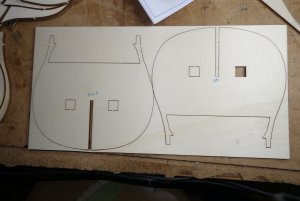
Bulkheads 6 and 8 are the more more alike bulkheads of the ship, they could have been placed near any other more different parts, but here they are and at this point you must guess which is which.
Of course this is no problem, once cut and piled with the other bulkheads it is easy to say wich is wich, but this rings a bell and shows that you have no easy way ahead. Or maybe I am being picky.
Once everythig cut, you have an heavy pile of firewood.

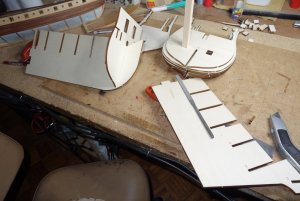
Well these are decent hours to be in bed, so more tomorrow.
Regards.
JL
Then I got myself another small model boat and started scratch building yet another small model boat.
My first small model boat was a Viking ship (Amati) that I changed substantially in order to get a passable model of a Viking ship (maybe a build log someday...
My second and third small boats you already know although Niña is a little put aside at the moment (but not forgotten).
And there happened my 75th birthday...
And then there were FIVE small model boats
Well, one of then is not so small...
At this point I must confess that it was ME who offered myself one of those small boats. The other was a lawful offer...
Nuestra Senõra del Pilar is kitted by OcCre (spanish) and they sell their more expensive kits complete or in packs. N. S. del Pilar is composed of 6 packs and I offered myself the first two. It is enough to build most of the hull.
The interesting part is that buying the packs is more or less the same price than buying the whole kit and gives more flexibility (and takes a lot less space at the stash.
The first pack is not that exciting, it has a lot of ply for the bulkheads and false keel plus some other wood for planking.

The instructions are in color, and there are some 1/3 plans. They cover all the packs and as almost all the instructions that I know are pretty useless. I mean, you have some pictures ot the build and a very vague step-by-step instructions .
In summary: you are on your own .


The other thing is that the ship is HUGE. The hull alone is 70cm long and it dwarfs my prince, let alone the Niña.
As a matter of fact I am not sure where I am going to put that monster once finished but I'll think of something. First it needs to be build.
The ply is good quality (5,5mm) but the "bridges" connecting the parts are difficult to break they had to be cut with a heavy carpet knife.
It may seem bold of me being as I am initiating in this hobby, but is not a beginners kit. I may not know a lot about ship kits, but I have my share of kits and instructions and for me a beginners kit is that kit that has very good and detailed instructions, the construction is straightforward, the parts fit together well and there are no traps.
This one has poor instructions, the construction has its problems, the fit is OK but traps it has.
Starting with the ply parts, they are not numbered although there are drawings showing where everything is.
Things like this may happen:

Bulkheads 6 and 8 are the more more alike bulkheads of the ship, they could have been placed near any other more different parts, but here they are and at this point you must guess which is which.
Of course this is no problem, once cut and piled with the other bulkheads it is easy to say wich is wich, but this rings a bell and shows that you have no easy way ahead. Or maybe I am being picky.
Once everythig cut, you have an heavy pile of firewood.

Well these are decent hours to be in bed, so more tomorrow.
Regards.
JL





